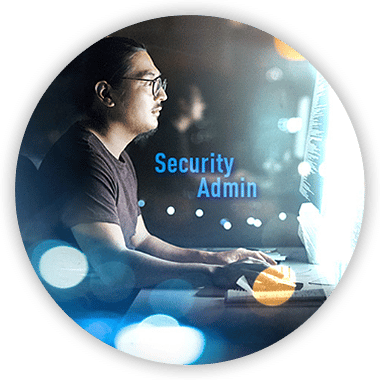-
検索
- 言語メニュー
- ソリューション
-
プラットフォーム
-
Explore Infinity
- Platform OverviewIndustry leading AI-Powered and Cloud-Delivered cyber security platform
- Infinity Core ServicesPrevention first security operations, AI Copilot, ThreatCloud AI, and 24/7 managed security services, consulting and training
- Infinity PortalLearn about and sign into Check Point's unified security management platform
- Infinity Platform AgreementPredictable cyber-security environments through a platform agreement
- See All Products >
-

Introducing Quantum Force
詳細はこちら -
Quantum の詳細
- Next Generation Firewall (NGFW) Security GatewayIndustry-leading AI powered security gateways for modern enterprises
- SD-WANSoftware Defined Wide Area networks converging security with networking
- Security Policy and Threat ManagementManage firewall and security policy on a unified platform for on-premises and cloud networks
- Operational Technology and Internet of Things (IoT) Autonomous IoT/OT threat prevention with zero-trust profiling, virtual patching and segmentation
- リモート アクセスVPN Secure, seamless remote access to corporate networks
- See All Products >
-

Introducing Quantum Force
詳細はこちら -
CloudGuard の詳細
- クラウド向けのネットワーク セキュリティ Industry-leading threat prevention through cloud-native firewalls
- Cloud Native Application Protection PlatformCloud native prevention first security
- Code SecurityDeveloper centric code security
- Web Application and API SecurityAutomated application and API security
- See All Products >
-

Introducing Quantum Force
詳細はこちら -
Harmony の詳細
- Email and Collaboration SecurityEmail security including office & collaboration apps
- エンドポイント セキュリティComprehensive endpoint protection to prevent attacks & data compromise
- モバイル セキュリティComplete protection for the mobile workforce across all mobile devices
- SASEUnifying security with optimized internet and network connectivity
- SaaS SecurityThreat prevention management for SaaS
- See All Products >
-

Introducing Quantum Force
詳細はこちら -
コアサービス
- Managed Prevention & Response ServiceSOC operations as a service with Infinty MDR/MPR
- Extended Prevention & ResponseAI-Powered, Cloud-Delivered Security Operations with Infinity XDR/XPR
- Secure Automation and CollaborationAutomate response playbooks with Infinity Playblocks
- Unified Security Events and Logs as a ServiceInfinity Events cloud-based analysis, monitoring and reporting
- AI Powered TeammateAutomated Security Admin & Incident Response with AI Copilot
- ThreatCloudのAIThe Brain behind Check Point’s threat prevention
- See All Products >
-

Introducing Quantum Force
詳細はこちら
-
サポート/サービス
-
Explore Assess Services
- Cyber Risk AssessmentAssess your cyber risks and plan actionable strategy
- Attack Surface & Penetration TestingEvaluate security defenses against potential cyber attacks and threats
- Security Controls Gap Analysis
(NIST, CIS)Analyze technology gaps and plan solutions for improved security and ROI - Threat Intelligence & Brand ReputationAnalyzed data on cyber threats, aiding proactive security measures
- See All Assess Services >
-

Learn hackers inside secrets and beat them at their own game
View Courses -
Explore Transform Services
- Security Deployment & OptimizationStrategic deployment and refinement of security for optimal protection
- アドバンストテクニカルアカウントマネジメントProactive service delivered by highly skilled Cyber Security professionals
- ライフサイクル マネジメント サービスEffectively maintain the lifecycle of security products and services
- See All Transform Services >
-

Learn hackers inside secrets and beat them at their own game
View Courses -
Explore Master Services
- 認証& 認定Comprehensive cyber security training and certification programs
- CISO TrainingGlobally recognized training for Chief Information Security Officers
- Security AwarenessEmpower employees with cyber security skills for work and home
- Cyber Park - Cyber RangeSimulated gamification environment for security training
- Mind Training HubCheck Point Cyber Security and Awareness Programs training hub
- See All Infinity Global Services >
-

Learn hackers inside secrets and beat them at their own game
View Courses -
Explore Respond Services
- インシデント レスポンスManage and mitigate security incidents with systematic response services
- Managed Detection and Response24/7 SOC Operations for Check Point + 3rd party solutions, 24/7 response
- Digital ForensicsComprehensive investigation and analysis of cyber incidents and attacks
- See All Respond Services >
-

Learn hackers inside secrets and beat them at their own game
View Courses - Explore Manage Services
-

Learn hackers inside secrets and beat them at their own game
View Courses - Explore Support Services
-

Learn hackers inside secrets and beat them at their own game
View Courses
-
ソリューション
- 使用事例
- 業界別ソリューション
- Organization Size
-
プラットフォーム
- Infinity Platform
- ネットワークを保護
- クラウドを保護
- ワークスペースを保護
- コアサービス
-

Introducing Quantum Force
詳細はこちら
-
サポート/サービス
- Assess
- Transform
- Master
- 対応
- Manage
- サポート
-
パートナー
- チェック・ポイントのパートナー
- パートナーになる
- 登録パートナー
-

Check Point is 100% Channel. Grow Your Business with Us!
Sign Up Now
-
詳細
- 企業情報
- 詳細
- サイバー セキュリティ情報
-

See how use cases come to life through Check Point's customer stories.
詳細はこちら












